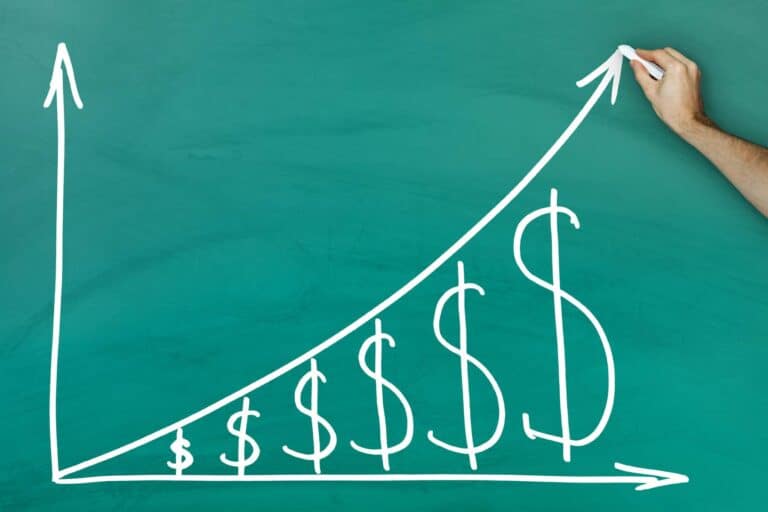1 Easy Way to Boost Your Monthly CPP

Written by Puja Tayal at The Motley Fool Canada
It’s time to do a reality check. If you plan to retire solely on the Canada Pension Plan (CPP), Old Age Security, and other government benefits, you might struggle to make ends meet. Firstly, all these pensions are taxable. Secondly, the Canada Revenue Agency (CRA) determines the payout — not you.
The CRA has set the 2023 average CPP payout at $811, which can barely keep up with the medical inflation. The CPP was not meant to replace your income but support your personal savings. If you are 60 or 65 and still working, you have a shot to boost your CPP.
One way to boost your monthly CPP
The CRA allows you to start collecting your CPP payout as early as 60, or you can delay it till 70. If you start collecting your payout at 65, you can get an average monthly payout of $811.21, or a maximum of $1,306.57, in 2023. Rarely does anyone get the maximum payout.
| Age 60 | Age 65 | Age 70 |
CPP | $519 | $811.21 | $1,151.62 |
CPP/year | $6,228.0 | $9,732.0 | $13,824.0 |
Annual CPP After-tax (15%) | $5,293.8 | $8,272.2 | $11,750.4 |
Annual CPP After-tax (20.5%) | $4,951.3 | $7,736.9 | $10,990.1 |
The CRA rewards you by 0.7% for every month you delay your payouts. If you delay it by three years, you could increase your monthly CPP by 25.25% (0.7% x 36 months). It means your $811 payout could become $1,015 after three years. You can delay the pension by five years (age 70) and increase it by 42% to $1,151.62/month.
And if you start collecting CPP at age 60, the CRA will reduce your payout by up to 36% (0.6% every month). The CPP is taxable, so look at the after-tax income to get an idea if it is beneficial to delay payouts till 70 or start collecting CPP.
Is investing CPP money in dividend stocks worth the risk?
What if you collect $811 CPP at age 65 and invest it in a dividend stock through the Tax-free Savings Account (TFSA)? Would it be beneficial?
I did some number crunching on this what-if scenario, and there is a trade-off:
Year | BCE share price | Contribution | Total Investment (Contribution + dividend income) | New shares purchased | Shares Accumulated | Dividend/ share (5% CAGR) | Dividend income |
2023 | $63.0 | $7,735.0 | $7,735.0 | 122.8 |
| $3.9 | $475.15 |
2024 | $65.5 | $7,735.0 | $8,210.2 | 125.3 | 248.1 | $4.1 | $1,008.09 |
2025 | $68.1 | $7,735.0 | $8,743.1 | 128.3 | 376.4 | $4.3 | $1,605.95 |
2026 | $70.9 | $7,735.0 | $9,341.0 | 131.8 | 508.2 | $4.5 | $2,276.76 |
2027 | $73.7 | $7,735.0 | $10,011.8 | 135.8 | 644.0 | $4.7 | $3,029.61 |
In my model, John (age 65) invests the after-tax pension of $7,736 in BCE (TSX:BCE) and reinvests the dividend amount for five years through the TFSA. BCE has an average dividend yield of 6% and grows it at a compound annual growth rate (CAGR) of 5%. I assume BCE share price grows at a 4% CAGR. After five years, John will have 644 shares of BCE that pay $3,029 in annual dividend income. This entire amount is tax-free.
At age 70, John collects $10,765 annually ($7,736.6 CPP + $3,029 BCE dividend). This amount is still lower than what he could have collected ($10,990) had he delayed his CPP payout to age 70. The only benefit is John has 644 BCE shares worth $47,400.
Is this $47,000 worth giving up on a higher pension?
BCE’s returns are subject to market risk. The actual returns from BCE may be different from the estimated ones (in the table). If you ask me, I would rather delay my CPP payout (which is safer) than invest it in risky stocks.
Final thoughts
The benefit of a government pension is you can be assured that you will get the promised amount. That may not always be the case with stock market investments. Remember, stocks are as good as the company’s profits, and a company is exposed to industry, company, and market risk.
If you want to boost your CPP, invest some of your surplus amounts from salary or work in BCE and other Dividend Aristocrats through a TFSA.
The post 1 Easy Way to Boost Your Monthly CPP appeared first on The Motley Fool Canada.
Should You Invest $1,000 In BCE?
Before you consider BCE, you'll want to hear this.
Our market-beating analyst team just revealed what they believe are the 5 best stocks for investors to buy in May 2023... and BCE wasn't on the list.
The online investing service they've run for nearly a decade, Motley Fool Stock Advisor Canada, is beating the TSX by 23 percentage points. And right now, they think there are 5 stocks that are better buys.
See the 5 Stocks * Returns as of 5/24/23
More reading
Fool contributor Puja Tayal has no position in any of the stocks mentioned. The Motley Fool has no position in any of the stocks mentioned. The Motley Fool has a disclosure policy.
2023

 Yahoo Finance
Yahoo Finance 